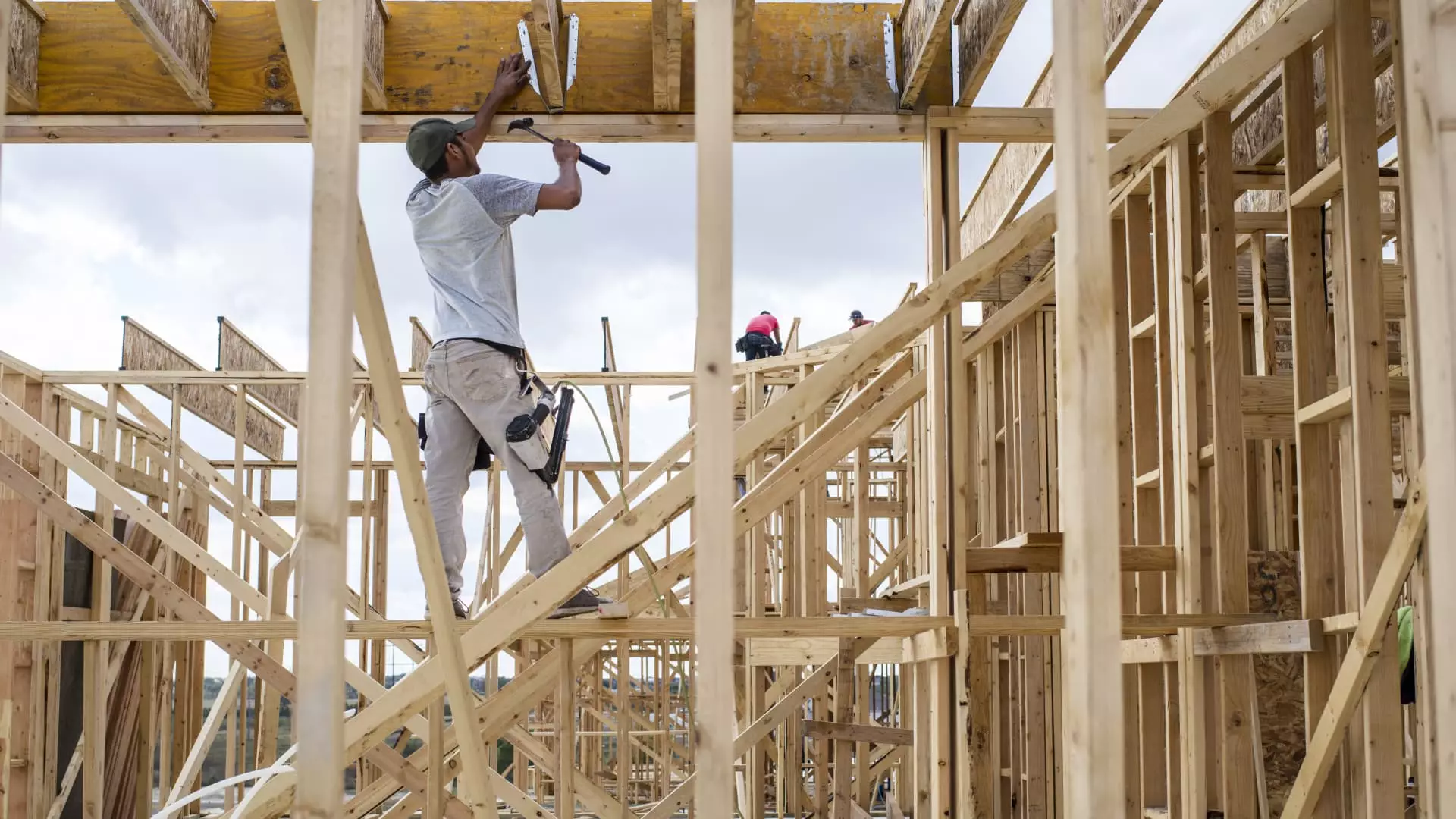In an era where economic uncertainty and rising interest rates have taken center stage, the U.S. housing sector finds itself under mounting pressure. Contrary to the optimistic narratives that sometimes emerge from government officials or optimistic analysts, the reality on the ground paints a stark picture: homebuilders are facing a crisis of confidence and shrinking margins. Reports indicate that builder sentiment remains depressed, with confidence levels lingering in negative territory for over a year and a half. This prolonged downturn signals not just a temporary dip but a fundamental shift in the housing landscape, driven by affordability crises, rising mortgage costs, and tepid demand.
The current climate reveals a sector scrambling for survival. Newly released data show that nearly 40% of homebuilders resorted to price cuts in July—marking the highest rate in three years—highlighting how desperate measures are becoming commonplace. This strategic move, intended to stimulate demand, further erodes profit margins and raises questions about the long-term viability of new construction. Builders are caught in a vicious cycle where lowering prices is the only way to attract buyers, but doing so diminishes their financial resilience, pushing the industry closer to a possible collapse if conditions do not improve.
Economic Constraints and Consumer Hesitation
Underlying this distress is a broader economic malaise. Although recent legislative efforts, like the new budget act, promised some tax relief, these measures have not been enough to offset the ongoing squeeze caused by high interest rates. Mortgage rates have stubbornly remained elevated—hovering at levels that suppress housing affordability. For many potential buyers, the dream of homeownership is slipping further from reach, trapped by the double whammy of high prices and expensive loans.
Data reflect this erosion of buyer interest starkly: traffic from prospective buyers has plummeted to its lowest point since late 2022. With foot traffic dwindling, builders are seeing fewer commitments, which—if sustained—could lead to a broader construction slowdown and a potential glut of vacant properties. It’s clear that the housing market is no longer buoyant but teetering on the edge of a significant downturn. This indecision among consumers is not simply a matter of short-term fluctuations; it’s a symptomatic signal of a market that has lost confidence, with many buyers choosing to wait rather than purchase at today’s inflated costs.
Shifting Strategies and Uncertain Outcomes
In response, homebuilders have shifted tactics—mainly through price reductions and mortgage rate buy-downs. While these measures temporarily encourage buyer interest, they come at a cost. Margins are shrinking, and analysts warn that excessive reliance on price cuts could jeopardize the financial health of major players in the industry. It’s a perilous balancing act where trying to stay afloat might unintentionally accelerate the sector’s decline.
Regionally, the disparities are telling. The Northeast manages a slight resilience, with sentiment improving marginally, but the South and West are seeing sentiment further erode, hinting at regional vulnerabilities and divergent economic conditions. The inconsistency suggests that a one-size-fits-all approach won’t revive the overall market; instead, targeted interventions and policy adjustments will be necessary to stem the bleeding.
If homebuilders continue to double down on price cuts and rate buy-downs rather than addressing fundamental affordability issues, the sector faces an existential threat. With demand suppressed and margins squeezed, the industry might soon find itself in a situation where further price reductions only deepen losses and weaken financial stability across the board.
The Larger Implications for the Economy
The housing market is a critical pillar of the broader economy. Its decline doesn’t just affect builders and investors but ripples across industries—from construction and banking to retail and local governments reliant on property taxes. If the current trend persists, it could hamper economic growth for years to come, reinforcing a cycle of stagnation and decline.
In sum, the narrative emerging from the housing sector isn’t one of recovery but of ongoing struggle. Builders, caught between regulatory headwinds, elevated rates, and a hesitant consumer base, are fighting a losing battle with their hands tied behind their backs. Without decisive policy action—focused on restoring affordability and stability—the sector’s future appears bleak, potentially heralding a broader economic slowdown that center-right liberals like myself should recognize as a systemic warning sign rather than a passing storm.

